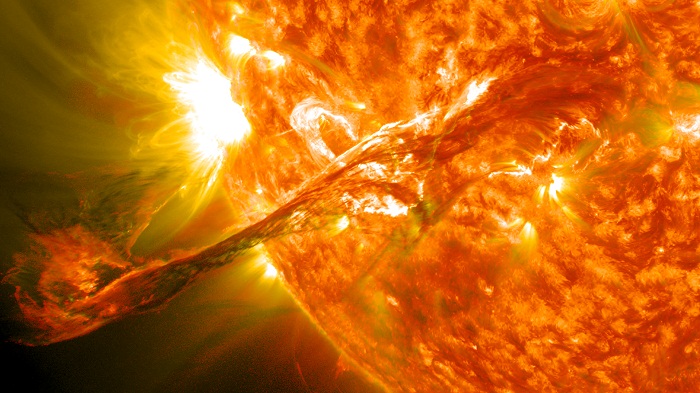"To understand the fundamental dynamics of the Sun, such as the origin of solar storms, we need to collect data from as wide a field of view as possible," says physicist Philip Goode from the New Jersey Institute of Technology.
"During large flares, for example, magnetic field changes appear to occur at many different places with near simultaneity."
To capture a broader perspective on this kind of solar activity, Goode`s team – including researchers at the National Solar Observatory (NSO) and the Kiepenheuer Institute for Solar Physics in Germany – worked for more than a decade on what`s called multi-conjugate adaptive optics, or MCAO.
The MCAO device they`ve come up with consists of three mirrors that change shape to correct Earth`s atmospheric distortions of incoming light waves.
When light from the Sun enters Earth`s atmosphere, it encounters turbulent airflows that can blur our observations, in the same way that hot exhaust fumes can create a swirling haze above the surface of a road.
That effect is caused by air masses at different temperatures mixing, which distorts the way light propagates through the atmosphere.
It`s the same reason that stars appear to twinkle to the human eye, and it`s something that conventional telescopes can`t easily compensate for.
The MCAO device gets around this thanks to its mirrors, which are guided by extremely fast cameras operating at 2,000 frames per second.
Each of the three mirrors captures light from a different altitude in Earth`s atmosphere: at ground level; 4.8 kilometres (3 miles) high; and 9.7 kilometres (6 miles) high.
By analysing the images simultaneously, the system effectively corrects for the light distortions, and produces a corrected real-time view of solar activity that`s three times wider than previous observations.
The upgrade means we`ll be able to watch things like massive sunspots stretching some 32,000 kilometres wide (about 20,000 miles) in the Sun`s photosphere in real-time, whereas previously we could only see a narrower portion of the event without distortion.
That could help us to understand how exposed we are to catastrophic geomagnetic storms, which could wipe out Earth`s power grid and telecommunications systems for years – or cause something even worse to happen.
"Only by seeing the comprehensive array of eruptions all at once will we be able to accurately measure the size, strength, and sequencing of these magnetic events," says Goode.
"[We could] also analyse the forces that propel the star`s magnetic fields to twist around each other until they explode, spewing massive amounts of radiation and particles that, when directed earthward, can cause disruptive space weather."
/ScienceAlert/
More about:
















































